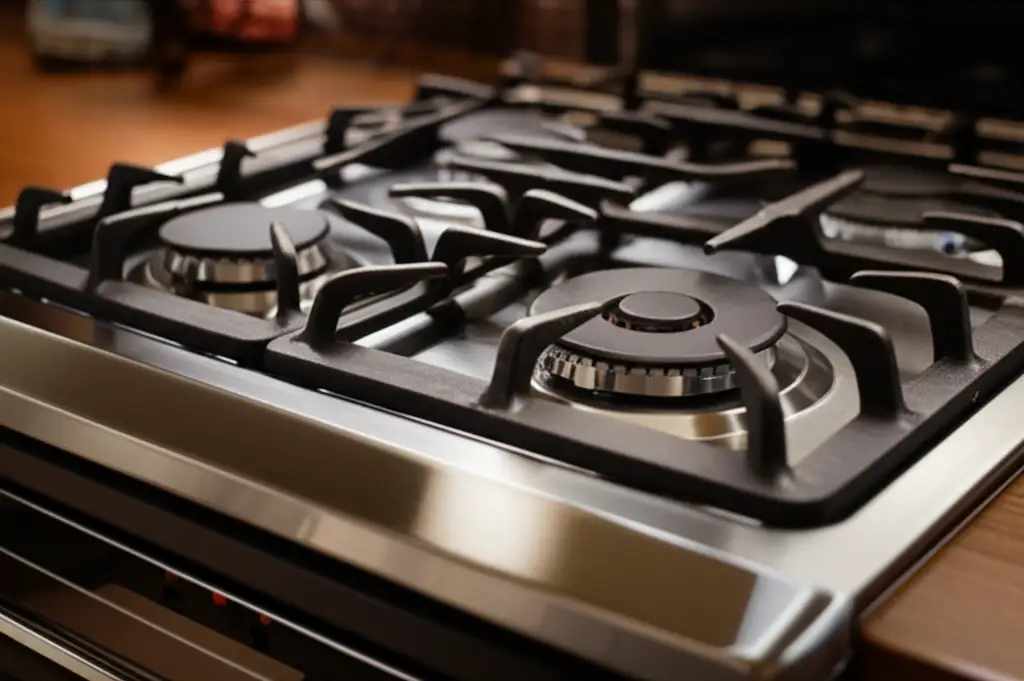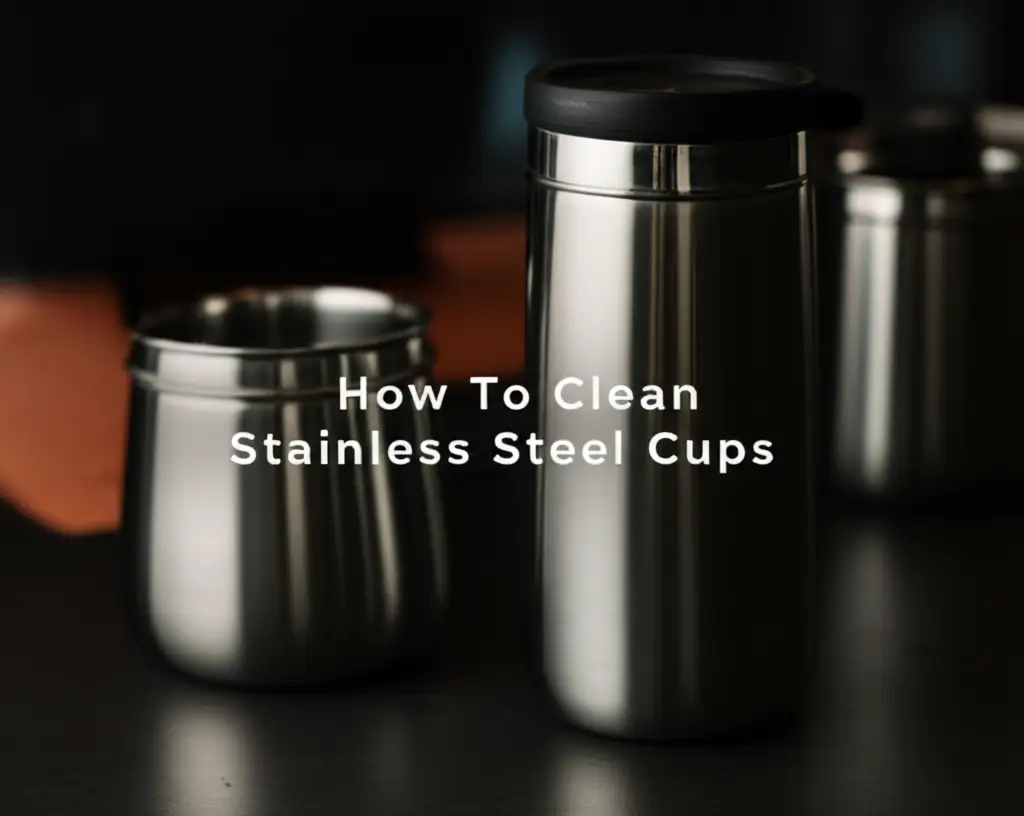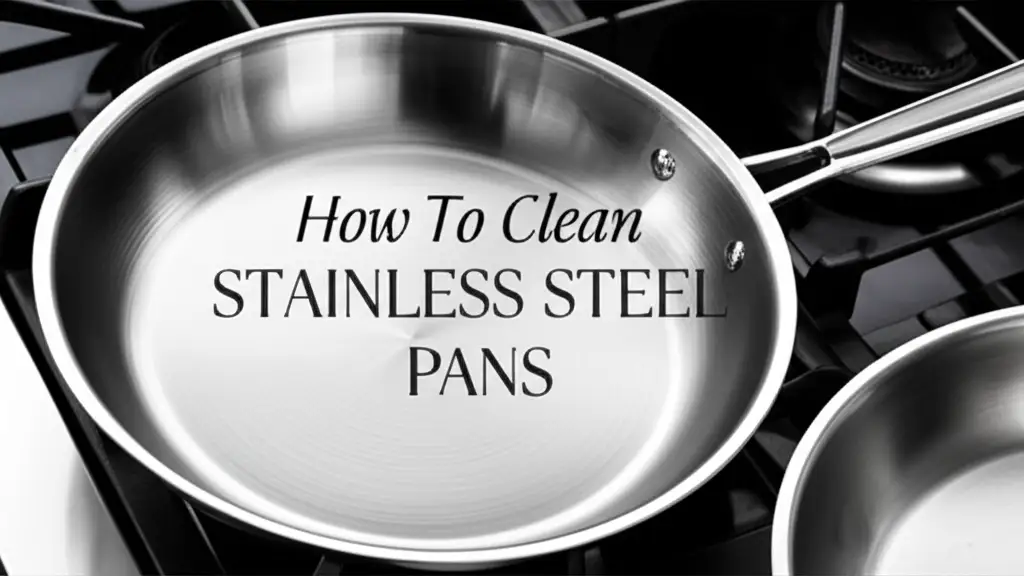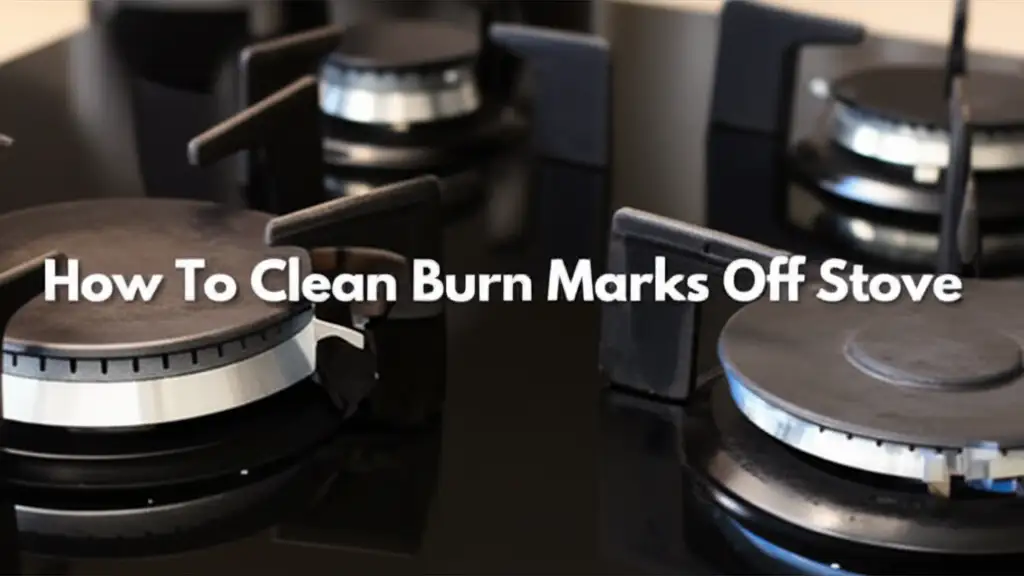· Kitchen Care · 17 min read
How To Clean Stainless Steel Cooktop

Deep Clean Your Stainless Steel Cooktop for a Sparkling Shine
A gleaming kitchen starts with a spotless cooktop. Your stainless steel cooktop adds beauty to your home. Food splatters and grease can quickly dull its shine. Keeping it clean is important for both looks and hygiene. I know the frustration of seeing a beautiful cooktop covered in grime.
This guide helps you understand how to clean stainless steel cooktop surfaces. We will cover daily cleaning tips. We will also discuss how to tackle tough stains. You will learn about the best tools and cleaning agents. By the end, you will have a shining cooktop. Let’s make your kitchen sparkle again.
Takeaway
Keeping your stainless steel cooktop pristine is simple with the right approach:
- Daily Wipe-Down: Clean spills immediately with a soft cloth and mild soap.
- Target Stains: Use baking soda paste for burnt-on food.
- Remove Grease: Apply dish soap or a degreaser for oily residues.
- Prevent Streaks: Finish with a microfiber cloth and stainless steel cleaner or vinegar.
- Maintain Shine: Clean regularly and wipe in the grain direction.
To clean a stainless steel cooktop, first remove grates and caps. Wipe away loose debris. Apply a gentle cleaner like dish soap, baking soda paste, or vinegar, depending on the stain type. Scrub gently with a non-abrasive sponge. Rinse thoroughly and dry with a microfiber cloth to prevent streaks.
Essential Tools and Preparations for Cleaning Your Cooktop
Before you start cleaning, gather your supplies. Having everything ready makes the process smoother. I always collect my tools first. This saves time and keeps me focused. Proper tools also protect your cooktop from scratches.
You will need a few basic items. These items are often already in your home. They are safe for stainless steel surfaces. Using the correct tools prevents damage.
Gather Your Cleaning Arsenal
Here is a list of what you will need:
- Soft cloths or microfiber towels: These are essential for wiping and polishing. They prevent scratches.
- Warm water: Used for rinsing and general cleaning.
- Mild dish soap: Great for daily grease and grime.
- Baking soda: A natural abrasive for tough spots.
- White vinegar: Excellent for dissolving hard water stains and leaving a streak-free shine.
- Stainless steel cleaner or polish: Optional, but good for a final polish.
- Non-abrasive sponge or scrub brush: For scrubbing without scratching.
- Spray bottle: For applying vinegar or diluted cleaner.
Make sure your cooktop is cool before you begin. Never clean a hot surface. This can cause burns or damage the cooktop. Unplug the cooktop if possible, for safety. Remove all grates and burner caps. These parts often need separate cleaning. Set them aside on a protective surface. A clean cooktop starts with good preparation.
Daily Care and Routine Cleaning of Stainless Steel Cooktops
Regular cleaning is the best way to maintain your stainless steel cooktop. Daily care prevents grime buildup. It makes deep cleaning less frequent. I try to wipe down my cooktop after every use. This simple habit saves a lot of effort later.
Fresh spills are easier to clean than dried ones. Food particles and grease can become stubborn if left too long. A quick wipe-down keeps your cooktop looking its best. This routine helps preserve the cooktop’s finish. It also promotes a hygienic kitchen environment.
Simple Steps for Everyday Sparkle
Follow these steps for routine cleaning:
- Wipe spills immediately: Use a damp, soft cloth. Blot up spills before they dry. This prevents stains from setting.
- Remove loose debris: Use a soft brush or cloth to sweep away crumbs. This prevents scratching during wiping.
- Create a mild soap solution: Add a few drops of dish soap to warm water. Mix it well.
- Wipe the surface: Dip a microfiber cloth into the solution. Wipe down the entire cooktop surface. Always wipe in the direction of the stainless steel grain. This prevents streaking and enhances shine. You can usually see the faint lines of the grain.
- Rinse thoroughly: Dampen a clean cloth with plain water. Wipe the cooktop again to remove all soap residue. Soap residue can leave dull spots.
- Dry completely: Use a dry, clean microfiber cloth. Polish the surface until it is dry and streak-free. This final step is crucial for shine.
For light grease, dish soap works wonders. It breaks down the oil easily. Remember to be gentle. Avoid harsh scrubbers or abrasive cleaners. These can scratch the delicate stainless steel surface. Consistency in daily cleaning pays off. This routine helps your cooktop stay beautiful.
Tackling Stubborn Stains and Burnt-On Messes
Sometimes, daily wiping is not enough. You might find stubborn stains or burnt-on food. These require a bit more effort. I have faced many tough stains on my own cooktop. Knowing the right approach makes a big difference. Do not panic when you see a difficult spot.
Burnt-on food is common on cooktops. Grease can also build up and become sticky. These messes need specialized cleaning methods. The goal is to remove them without damaging the stainless steel. We use gentle yet effective natural cleaners.
Effective Strategies for Difficult Grime
Here are methods for stubborn stains:
For Burnt-On Food: Baking Soda Paste
Baking soda is a miracle cleaner for burnt food. It is mildly abrasive, yet gentle enough for stainless steel.
- Make a paste: Mix baking soda with a small amount of water. Create a thick paste. It should resemble toothpaste.
- Apply the paste: Spread the baking soda paste generously over the burnt area. Make sure it covers the stain completely.
- Let it sit: Allow the paste to sit for at least 15-30 minutes. For very tough stains, let it sit for a few hours or even overnight. This gives the baking soda time to break down the grime.
- Gently scrub: Use a non-abrasive sponge or a soft brush. Gently scrub the paste into the stain. Scrub in the direction of the grain. You will see the burnt bits start to lift.
- Wipe clean: Use a damp microfiber cloth to wipe away the paste and loosened grime.
- Rinse and dry: Rinse the area with plain water. Dry thoroughly with a clean, dry cloth to prevent water spots.
This method is very effective. It is also safe for your cooktop. If stains persist, repeat the process. This approach is similar to how you would clean burnt stainless steel pot or clean burnt oil from stainless steel pan.
For Sticky Grease and Oily Residues
Grease can be challenging. It tends to spread and stick. Dish soap is good for light grease. For heavier grease, you need more power.
- Apply dish soap: Squirt a generous amount of liquid dish soap directly onto the greasy areas.
- Add warm water: Dampen a soft cloth with warm water.
- Wipe and emulsify: Gently wipe the dish soap over the grease. The warm water helps the soap break down the oil. Let it sit for 5-10 minutes if the grease is thick.
- Scrub gently: Use the non-abrasive sponge. Scrub the greasy spots. Dish soap is a degreaser. It lifts the oil effectively. This method is similar to how you would clean grease off stainless steel.
- Rinse thoroughly: Wipe with a clean, damp cloth. Remove all soap and grease residue.
- Dry and polish: Dry the cooktop with a clean microfiber cloth. Polish in the direction of the grain for shine.
For very stubborn grease, a dedicated stainless steel degreaser can be used. Always follow product instructions carefully. Test any new cleaner in an inconspicuous area first. This ensures it does not harm your cooktop’s finish. Patience and gentle scrubbing are key to success.
Restoring Shine: Eliminating Streaks and Water Spots
After cleaning, you might notice streaks or water spots. These can make your cooktop look dull. Stainless steel is prone to showing smudges. It can be frustrating to clean, only to see streaks. The good news is, these are easy to fix. I always make sure to address streaks. They detract from the clean look.
Water spots happen when water dries on the surface. Minerals in the water leave deposits. Streaks occur from cleaning product residue or improper drying. A streak-free finish is the hallmark of a truly clean stainless steel cooktop.
Secrets to a Spotless, Streak-Free Finish
Here is how to achieve a perfect shine:
Using White Vinegar for a Streak-Free Clean
White vinegar is an excellent, natural cleaner. It cuts through residues and hard water spots. It leaves stainless steel gleaming without harsh chemicals. You can use it after washing your cooktop with soap. This acts as a final rinse. Many people use vinegar to clean stainless steel appliances with vinegar.
- Prepare the solution: Fill a spray bottle with undiluted white vinegar.
- Spray the cooktop: Lightly mist the entire stainless steel surface. Do not saturate it. A fine mist is enough.
- Wipe with the grain: Immediately use a clean, dry microfiber cloth. Wipe the vinegar in the direction of the stainless steel grain. The vinegar evaporates quickly. This helps prevent streaks.
- Buff for shine: Use a fresh, dry part of the microfiber cloth. Lightly buff the surface until it shines. This removes any remaining moisture.
Vinegar is also great for cleaning hard water stains from stainless steel sink. It breaks down mineral deposits.
Using Stainless Steel Polish for Added Luster
For an extra layer of shine and protection, use a dedicated stainless steel polish. These products often repel fingerprints and dust. They leave a beautiful, uniform finish.
- Apply polish: Spray a small amount of stainless steel polish onto a clean microfiber cloth. Do not spray directly on the cooktop. This prevents overspray.
- Wipe with the grain: Wipe the polish onto the cooktop. Follow the direction of the grain. Work in small sections.
- Buff for shine: Use a separate, clean, dry microfiber cloth. Buff the surface until it shines. Remove any excess polish.
Choosing the right cloth is critical. Microfiber cloths are soft and absorbent. They pick up residue effectively. They also prevent lint from being left behind. Always use clean cloths for these final steps. Dirty cloths can re-deposit grime or lint. With these steps, your stainless steel cooktop will look brand new.
Deep Cleaning Burner Grates and Knobs
While focusing on the cooktop surface, do not forget the grates and knobs. These parts collect a lot of grease and food residue. Cleaning them thoroughly is important. It ensures a truly clean cooktop. I always tackle these components separately. They often need a different cleaning approach.
Burner grates are usually cast iron or porcelain-coated. Knobs are typically plastic or metal. Each material requires specific care. Improper cleaning can damage them. A clean cooktop looks best when all its parts sparkle.
Restoring Grates and Knobs to Their Former Glory
Here are effective methods for cleaning these components:
For Burner Grates
Cast iron grates are durable but can rust if not dried properly. Porcelain-coated grates are easier to clean.
- Soak in hot, soapy water: Fill your sink with hot water. Add a generous amount of dish soap. Place the grates in the water. Let them soak for at least 30 minutes, or even a few hours. The hot water and soap loosen burnt-on food and grease.
- Scrub with a non-abrasive brush: After soaking, use a stiff nylon brush or a non-abrasive scrub sponge. Scrub off any remaining food particles. For tough spots, you can make a paste of baking soda and water. Apply it to the grates and scrub.
- Rinse thoroughly: Rinse the grates under running water. Ensure all soap residue is gone.
- Dry completely: This step is crucial for cast iron grates. Dry them immediately and completely with a towel. If possible, place them back on the cooktop and turn on a burner briefly. The heat helps evaporate any remaining moisture. This prevents rust. For cast iron, you can also lightly oil them after drying. This helps protect against rust.
This process is similar to how you would clean stainless steel griddle.
For Cooktop Knobs
Knobs can accumulate grease and food splatters.
- Remove the knobs: Most cooktop knobs pull straight off. Check your appliance manual if unsure.
- Soak in warm, soapy water: Place the knobs in a bowl of warm water with dish soap. Let them soak for 15-20 minutes.
- Wipe and scrub: Use a soft cloth or an old toothbrush. Wipe away grease and grime. The toothbrush is great for crevices.
- Rinse and dry: Rinse the knobs thoroughly under plain water. Dry them completely with a towel. Ensure no water remains in the knob sockets.
- Clean the knob area: While the knobs are off, wipe down the area underneath them on the cooktop. This often accumulates dirt. Use your preferred stainless steel cleaner for this spot.
- Reattach the knobs: Once everything is dry, carefully reattach the knobs.
Cleaning these parts makes a huge difference. Your entire cooktop will look refreshed. It also ensures proper function of your burners.
Advanced Stain Removal: Rust and Discoloration
Sometimes, more challenging issues appear on stainless steel. Rust spots or strange discoloration can pop up. These are less common but can be worrying. I have seen my share of these issues. Knowing how to fix them gives peace of mind. Stainless steel is largely stain-resistant, but not stain-proof.
Rust usually happens from prolonged contact with iron or steel objects. It can also occur from harsh chemicals. Discoloration might come from excessive heat or certain food acids. Addressing these issues carefully is important. This prevents permanent damage to your cooktop.
Specialized Treatments for Tougher Issues
Here are solutions for advanced stains:
Removing Rust Spots
Rust on stainless steel is usually surface rust. It transfers from other items.
- Baking soda paste: Make a thick paste of baking soda and water. Apply it over the rust spot. Let it sit for an hour.
- Gentle scrub: Use a soft bristle brush or a non-abrasive sponge. Gently scrub the rust spot. Scrub in the direction of the grain. The mild abrasive action of baking soda helps lift the rust.
- Rinse and dry: Rinse the area with plain water. Dry immediately and completely with a microfiber cloth.
- Lemon juice and salt (for stubborn rust): For more persistent rust, mix lemon juice with a pinch of salt to form a paste. Apply it to the rust. Let it sit for 15-20 minutes. The acid in lemon juice helps dissolve the rust.
- Rinse and buff: Gently scrub, then rinse thoroughly. Dry and buff for shine. Remember that lemon juice is acidic; do not leave it on the surface too long. Also, avoid using steel wool or highly abrasive pads, as they will scratch the stainless steel. This is similar to methods used to clean rust off stainless steel.
Addressing Discoloration
Heat tint or rainbow discoloration is common. It often appears as faint rainbow-like streaks. This happens when stainless steel gets very hot.
- White vinegar solution: Spray undiluted white vinegar directly onto the discolored area.
- Wipe with the grain: Use a soft microfiber cloth. Wipe the vinegar over the discoloration. Wipe in the direction of the grain. Often, the acidity of the vinegar will neutralize the heat tint.
- Repeat if necessary: For stubborn discoloration, you might need to repeat the process. Let the vinegar sit for a few minutes before wiping.
- Buff dry: Always buff the area dry with a clean cloth to prevent new streaks.
For very severe discoloration or scratching, professional help might be needed. However, these methods resolve most common issues. Regularly cleaning and wiping down your cooktop helps prevent these problems. Paying attention to your cooktop’s state helps maintain its beauty. This is part of cleaning stains on stainless steel.
Maintaining and Protecting Your Stainless Steel Cooktop
Cleaning your stainless steel cooktop is one thing. Keeping it clean and protected is another. Maintenance is key to long-term shine. I always advise thinking about prevention. This reduces the need for heavy cleaning. A well-maintained cooktop serves you better for years.
Prevention involves small, consistent habits. Protection involves using the right products and techniques. These steps keep your cooktop looking new. They also extend its lifespan.
Tips for Long-Term Cooktop Care
Implement these practices for lasting beauty:
Use Proper Cookware
Heavy pots or pans can scratch stainless steel. Cast iron can leave rust marks if left wet.
- Lift, don’t drag: Always lift pots and pans. Do not drag them across the surface.
- Avoid leaving wet cast iron: Dry cast iron cookware thoroughly. Do not leave it on the cooktop for extended periods.
Wipe Spills Immediately
This is the golden rule. Acids from food can etch the surface if left too long. Sugary spills can caramelize and become hard to remove.
- Quick response: Have a soft cloth handy. Wipe spills as soon as they occur. Ensure the cooktop is cool enough to touch safely.
Choose the Right Cleaners
Harsh chemicals can damage the protective layer of stainless steel.
- Avoid abrasive cleaners: Stay away from steel wool, scouring powders, and harsh chemicals. They scratch the surface and ruin the finish.
- Read labels: Always check if a cleaner is safe for stainless steel.
- Consider a protectant: Some stainless steel cleaners leave a protective layer. This can repel fingerprints and make future cleaning easier. This is similar to maintaining a fingerprint-resistant stainless steel appliance.
Clean with the Grain
This simple rule makes a big difference in preventing streaks.
- Identify the grain: Look closely at your stainless steel. You will see faint lines running in one direction. Always wipe parallel to these lines.
- Consistent wiping: This ensures a uniform clean. It also helps remove trapped dirt more effectively.
Regular Polishing
A final polish adds a protective barrier and enhances shine.
- Use a dedicated polish: After cleaning, apply a small amount of stainless steel polish to a microfiber cloth.
- Buff gently: Wipe with the grain until the surface gleams. This repels new stains and fingerprints.
These maintenance steps are simple. They save time and effort in the long run. A little prevention goes a long way. Your stainless steel cooktop will remain a beautiful focal point in your kitchen.
FAQs About Cleaning Stainless Steel Cooktops
Here are answers to common questions about cleaning your stainless steel cooktop.
Can I use abrasive scrubbers or steel wool on my stainless steel cooktop?
No, you should never use abrasive scrubbers or steel wool. These materials can scratch the surface of your stainless steel cooktop. Scratches not only look bad but can also make the cooktop more prone to future staining. Always use soft cloths, microfiber towels, or non-abrasive sponges.
How do I remove fingerprints from my stainless steel cooktop?
Fingerprints are common on stainless steel. To remove them, use a clean microfiber cloth. Wipe the surface with a small amount of white vinegar. You can also use a dedicated stainless steel cleaner and polish. Always wipe in the direction of the grain for best results. Many polishes also create a barrier that resists new fingerprints.
Is it safe to use white vinegar on my stainless steel cooktop?
Yes, white vinegar is safe and effective for stainless steel cooktops. It helps dissolve hard water spots and removes streaks. It also acts as a mild disinfectant. Always dilute it or use it sparingly. Rinse the surface after using vinegar. Then, dry it thoroughly to prevent new water marks.
How often should I clean my stainless steel cooktop?
For best results, wipe down your stainless steel cooktop after every use. This prevents food and grease from drying and hardening. A deep clean should be done weekly or bi-weekly. This depends on how often you cook. Regular maintenance makes deep cleaning much easier.
What causes discoloration on stainless steel cooktops?
Discoloration, often appearing as a rainbow hue, is usually caused by excessive heat. It can also result from certain chemicals or food acids left on the surface too long. This is known as heat tint. White vinegar can often remove this type of discoloration. Use it with a microfiber cloth and wipe with the grain.
Conclusion
Cleaning your stainless steel cooktop does not have to be a chore. With the right tools and techniques, you can keep it looking pristine. We have covered everything from daily care to tackling tough stains. Remember to address spills quickly. Use gentle, effective cleaning agents. Always wipe in the direction of the grain.
Your stainless steel cooktop is an investment. Proper care extends its life and maintains its beauty. By following these steps, you will enjoy a sparkling clean kitchen. Make cleaning a regular part of your routine. A clean cooktop makes cooking more enjoyable. Start shining your cooktop today for a happier kitchen!
- stainless steel cleaning
- cooktop maintenance
- kitchen cleaning
- stain removal
- appliance care




